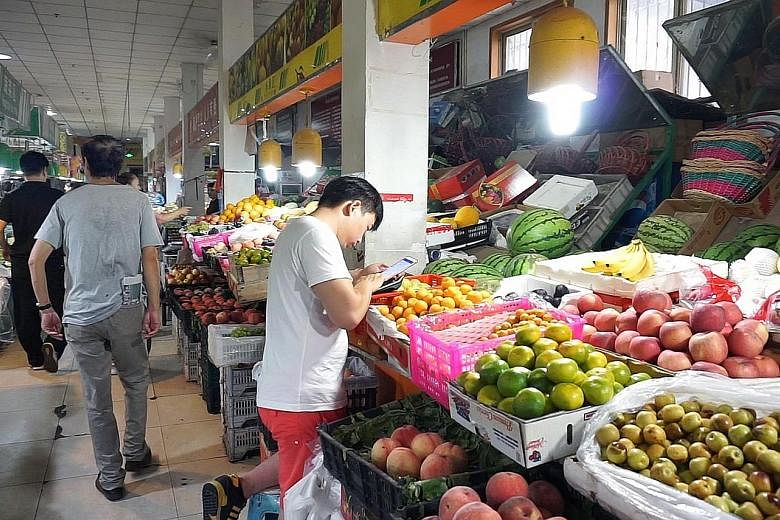Manpower Minister Lim Swee Say was queueing up to buy chestnuts at a roadside hawker stall in Shanghai a few years ago.
When he saw customers ahead of him waving their mobile phones, taking their chestnuts and leaving without paying any cash, he thought they were showing their phones to get a special offer.
He declined to participate, offering to pay the full price in cash.
But it turned out the customers were using WeChat Pay to scan the hawker's QR code.
Mr Lim felt like a "suaku" (country bumpkin), Prime Minister Lee Hsien Loong said yesterday when he recounted the incident.
Loud laughter greeted the narrative Mr Lee used to make a serious point: Singapore lags behind other cities in several areas of its Smart Nation push, like electronic payments. This is despite its "natural advantage", with its compact and highly connected state, a digitally literate population, and basic computing and robotics being taught in schools.
In major Chinese cities, nearly all payments - from taxi rides to tips for waiters - can be made by scanning a QR code with a phone. Cash and credit cards are rare.
"So, when visitors from China find that they have to use cash here, they ask: How can Singapore be so backward?" PM Lee said.
Six in 10 transactions here are made via cash or cheque, and there are too many different e-payment systems and schemes which must be simplified and integrated.
The Monetary Authority of Singapore has been working on this.
In the next 18 months, 25,000 unified point-of-sale terminals, which accept multiple payment options such as credit cards and contactless payments through phones, are expected to be deployed islandwide, the Smart Nation and Digital Government Office said in a statement yesterday.
Citing the newly launched PayNow service, Mr Lee said he hopes to use it to pay for hawker centre meals in the near future.
PayNow lets people make payments to a person's mobile number, instead of his bank account number, and works across different banks.E-payment at hawker centres will be rolled out in phases by the National Environment Agency by end-2019.
The drive is among five government projects to promote pervasive use of smart technologies.
Other e-payment initiatives include a common QR code to be rolled out in six months' time, which consumers and small businesses can use to receive money via PayNow, and account-based ticketing, which lets commuters use contactless bank cards to pay for trips without making top-ups.
To be a smart nation, Singapore has to take full advantage of information technology, said Mr Lee.
It is not just about having the fastest Internet connection or using self-driving cars and artificial intelligence, he added. It is about "using IT comprehensively to create new jobs, new business opportunities, to make our economy more productive, to make our lives more convenient, and to make this an outstanding city in which to live, work and play".


